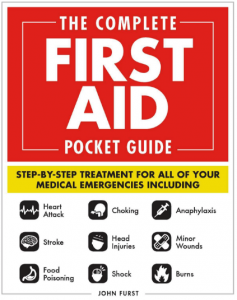Pediatric Advanced Life Support (PALS) Test
You have probably been told the pediatric advanced life support test is extremely challenging. The warnings you have heard are accurate. You need to be prepared to study, take your PALS training very seriously, and prepare for your written exam. There are several things you can do to help you be ready for both the written exam and the skills test.
One recommendation is to check into the AHA’s HeartCode PALS Part 1 training course. This is a web-based training module which steps you through the critical classroom materials and a series of simulated situations to prepare you for the exam. This web-based course offers you a chance to review materials multiple times before you are required to take the actual written exam. In most cases when you attend a traditional pediatric advanced life support class offered through the AHA you immediately take your exam at the completion of your training session. This does not allow you extra study and preparation time you might desire.
A second recommendation is to follow-up the HeartCode training with taking a few pre-tests online. You can find a variety of websites which offer example questions which are similar to the real PALS exam. These pre-tests can help you uncover areas of weakness in your studies allowing you to do a further review before you schedule your exam.
Focus On Your AHA Training to Prepare for Your Exam
The best recommendation is actually very simple. Enroll in an AHA class and stay highly focused throughout the two days of training. You will learn every answer which is asked on the exam. Take notes and use a highlighter to mark items you think are important to know. If you do not understand a particular area ask the instructor immediately for clarification. During the two days of training, you will have numerous breaks which can be used as additional time to study and prepare for the final PALS exam.
Both the PALS training and the pediatric advanced life support test expect you to have at least some background in the medical field or to have passed other life support classes. If you do not have this type of background it is recommended you take a general CPR course, and advanced life support class, and then move on to the PALS materials.
Types of Questions to Expect on Your PALS Test
Following are a brief list of questions you might encounter on your exam:
- When should you use smaller pediatric paddles for shock delivery with an AED?
- What is the appropriate medication to use for treating symptomatic bradycardia?
- What are the effects of using epinephrine?
- What is the appropriate size tube for intubating a 4-year old using an uncuffed tracheal tube?
As you can see by these four sample questions the test covers in-depth scenarios and you are expected to know the answers. The questions are multiple choices in most cases which can be an aid, but it is crucial you have a deep understanding of the materials you are studying.
The final suggestion is one you might be overlooking. Who do you know who have already completed the course and passed the exam? Sit down with them and discuss the test. Ask them questions and get their advice. They may still have materials from their course which you can borrow to study before you attend your PALS training and sit down to take the pediatric advanced life support test. Just a few extra hours of preparation can make the difference between a test being easy or being a trying challenge.





